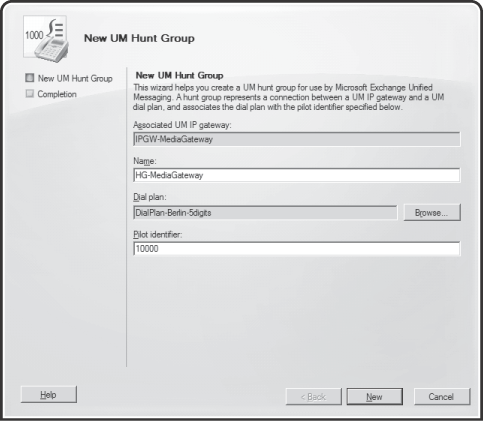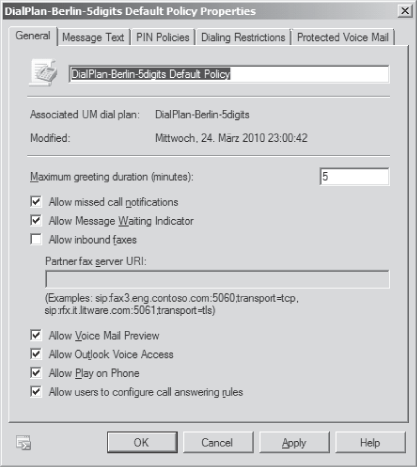4. Configuring UM Hunt Groups
For every UM IP gateway you also need at least one UM hunt group. To create a UM hunt group you need the following information:
Name of the UM hunt group
The pilot identifier for this UM hunt group
The UM dial plan the UM hunt group is part of
You can create the UM hunt group in the EMC, as shown in Figure 3 or you can use the New-UMHuntGroup cmdlet.

5. Configuring UM Mailbox Policies
UM mailbox policies are required when you enable users for UM. They're useful for applying and standardizing UM configuration settings for UM-enabled users. You create UM mailbox
policies to apply a common set of policies or security settings to
UM-enabled mailboxes and UM servers. UM mailbox policies are used to
configure the following settings:
General policies, such as allowing Voicemail Preview or configuring inbound faxes
Message text for system messages sent by the UM server
PIN policies
Dialing restrictions
Protected voice mail
You configure UM mailbox policies by using the EMC as shown in Figure 4 or you can use the New-UMMailboxPolicy cmdlet.
